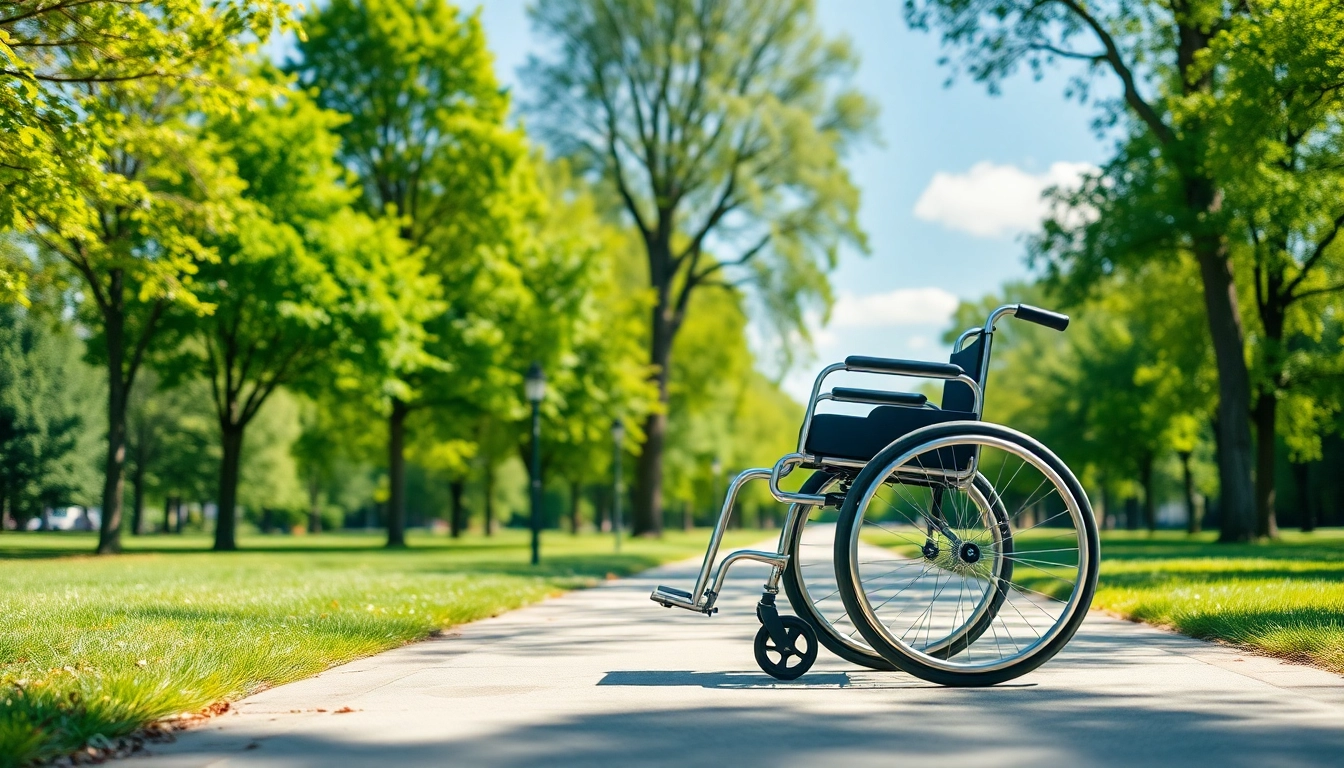Understanding Manual Wheelchairs
Manual wheelchairs have been an essential mobility aid for individuals with limited mobility for decades. They offer freedom, independence, and the ability to navigate various environments, from homes to public spaces. Designed for those who may not require the advanced technology of powered mobility devices, these wheelchairs emphasize simplicity and ease of use. By understanding manual wheelchairs, users can make informed decisions that enhance their quality of life.
What is a Manual Wheelchair?
A manual wheelchair is a mobility device propelled by the user or an attendant. It typically features two large rear wheels for propulsion and smaller front wheels for balance and maneuverability. Manual wheelchairs come in a range of sizes, styles, and functionalities, catering to the diverse needs of users. They are distinct from powered wheelchairs, which rely on battery power for movement.
Types of Manual Wheelchairs
Manual wheelchairs can be classified into several categories based on their purpose and design:
- Standard Manual Wheelchairs: These are basic models that offer a simple, effective solution for mobility without any specialized features.
- Lightweight Manual Wheelchairs: Constructed with lighter materials such as aluminum or titanium, these wheelchairs are easier to propel and transport.
- Transport Wheelchairs: Designed primarily for being pushed by an attendant, these wheelchairs are slim and compact for easy portability.
- Sport Wheelchairs: Built for athletic activities, these wheelchairs have customized features suited for various sports like basketball or racing.
- Reclining and Tilt-in-Space Wheelchairs: These offer adjustable positions for comfort, reducing pressure sores and enhancing user comfort.
Benefits of Using Manual Wheelchairs
Choosing a manual wheelchair comes with numerous advantages. Here are some key benefits:
- Independence: Users can navigate their environments without assistance, increasing their ability to engage in daily activities.
- Health Benefits: Regular use of a manual wheelchair provides physical exercise, improving upper body strength and stamina.
- Cost-Effectiveness: Manual wheelchairs are generally more affordable than their powered counterparts, making them accessible for a wider audience.
- Simplicity and Maintenance: With fewer mechanical components, manual wheelchairs are easier to care for and have lower maintenance costs.
- Customization: Many models allow customization in terms of color, design, and accessories, catering to personal preferences.
Key Features to Look For
Frame Materials and Durability
The frame material of a manual wheelchair significantly influences its weight, strength, and durability. Common materials include:
- Steel: Known for its strength and durability, steel frames are more robust but also heavier.
- Aluminum: Lightweight yet strong, aluminum frames make wheelchairs easier to lift and propel.
- Titanium: Although more expensive, titanium offers an excellent strength-to-weight ratio, making it ideal for active users seeking performance.
Seating Comfort and Support
Comfort in a manual wheelchair is crucial for user satisfaction. Features to consider include:
- Cushioning: Various seating options, including gel and foam cushions, provide personalized comfort and pressure relief.
- Adjustable Backrests: A backrest that can adapt to the user’s needs allows for better posture and comfort during long-term use.
- Armrests and Footrests: Adjustable armrests and footrests contribute to overall user comfort and ease of use.
Wheels and Maneuverability
A manual wheelchair’s wheel design impacts its maneuverability and ease of handling:
- Wheel Size: Larger rear wheels provide better speed and outdoor capability, while smaller wheels are suitable for indoor use.
- Tires: Depending on the expected terrain, users may choose solid tires for minimal maintenance or pneumatic tires for improved shock absorption.
- Wheel Position: Consideration for how wheels are positioned in relation to the frame affects balance and stability.
Choosing the Right Fit
Measuring for Comfort
Finding the right fit for a manual wheelchair involves accurate measurements. Key areas to measure include:
- Seat Width: Width should accommodate the user comfortably without being too tight.
- Seat Depth: Measured from the back of the buttocks to the back of the knees to prevent pressure sores.
- Seat Height: This affects propulsion, so the user’s feet should rest comfortably on the ground.
Personalized Adjustments
Many manual wheelchairs offer adjustment features for a tailored fit:
- Custom Seating: After measuring, users can select seating options that suit their daily needs and comfort levels.
- Configured Armrests: Armrests can be adjusted or padded to enhance comfort while reducing strain.
- Footrest Adjustments: Proper foot positioning can ease pressure on the legs and improve overall propulsion effectiveness.
Consulting a Specialist
Seeking assistance from a healthcare professional or wheelchair specialist is advisable for optimal fitting. They can provide valuable insights based on user needs, mobility goals, and preferences. Working with a specialist ensures the chosen wheelchair enhances lifestyle and usability.
Maintenance and Care
Routine Checks for Longevity
Regular maintenance is crucial to ensure a manual wheelchair remains in excellent working condition. Recommended routines include:
- Tire Pressure Checks: Ensure that tires maintain appropriate pressure for best handling.
- Brake Functionality: Regularly inspect brakes to ensure they are functioning correctly to prevent accidents.
- Frame Inspections: Look for signs of wear, rust, or damage in the frame that might compromise safety.
Cleaning Your Manual Wheelchair
Cleaning techniques to maintain the hygiene of a manual wheelchair include:
- Regular Wiping: Use a damp cloth to wipe down surfaces and remove dirt buildup.
- Monthly Deep Clean: Every month, disassemble removable parts and clean thoroughly to prevent odors and bacterial growth.
- Disinfection: After cleaning, use suitable disinfectants to sanitize surfaces, especially if the wheelchair is used frequently.
When to Seek Professional Repairs
Professional repairs may be necessary when:
- Visible Damage: Cracks, bends, or other forms of structural damage should be addressed promptly.
- Severe Wear: Any parts showing signs of significant wear can affect performance and safety.
- Unresponsive Mechanics: Difficulty with pushing or managing brakes indicates the need for professional assessment.
Real-Life User Experiences
Testimonials from Manual Wheelchair Users
User experiences can illuminate the intricate dynamics of manual wheelchair use. Several individuals have shared their experiences regarding how manual wheelchairs have transformed their daily lives, providing independence and confidence:
“Since transitioning to a manual wheelchair, I’ve found that I can navigate my neighborhood without feeling dependent on others – it’s empowering!”
Common Challenges Faced
While manual wheelchairs provide numerous benefits, users encounter various challenges. Common issues include:
- Fatigue: Users may experience fatigue from propelling the wheelchair, especially over long distances.
- Accessibility Issues: Navigating curbs, stairs, and uneven surfaces can be daunting without assistance.
- Spatial Constraints: Crowded indoor spaces can make maneuvering difficult.
Success Stories and Solutions
Many users have developed strategies to overcome challenges efficiently. For instance:
- Group Classes: Engaging in community exercise classes can enhance upper body strength and reduce fatigue.
- Accessibility Audits: Users may evaluate their homes and public spaces for potential accessibility improvements.
- Assistive Devices: Utilizing tools like wheelchair ramps can provide enhanced mobility options.














Leave a Reply